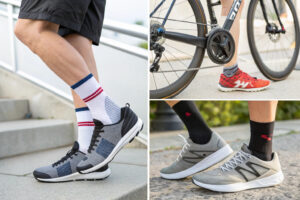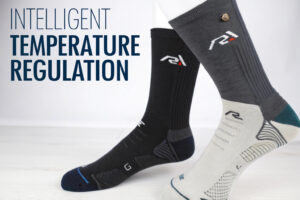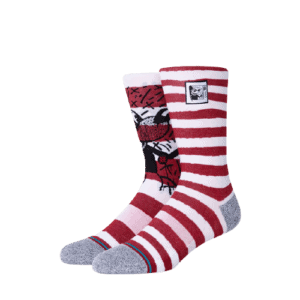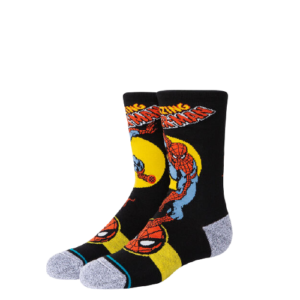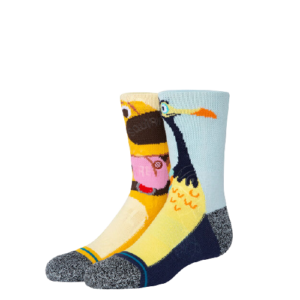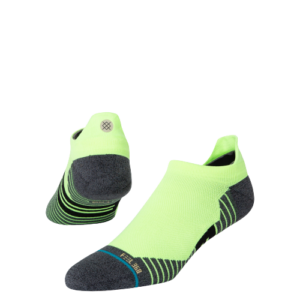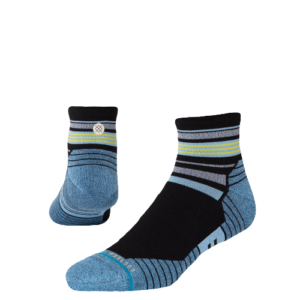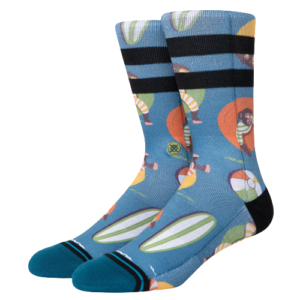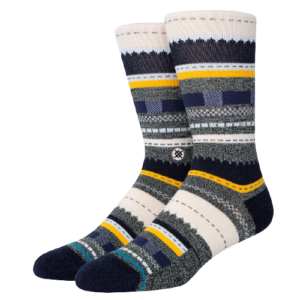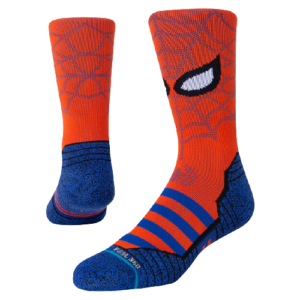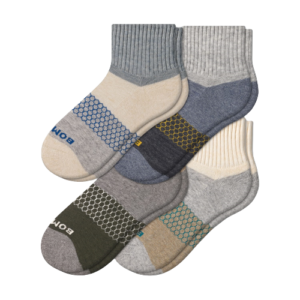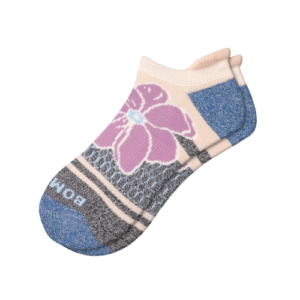Struggling with hot, sweaty, and uncomfortable feet in tropical climates? You're not alone. Many people experience discomfort, but the right sock fabric can make a world of difference. The constant heat and humidity can ruin your day, leading to blisters and odors.
Linen blend socks are an excellent choice for tropical climate breathability because they combine the natural cooling and moisture-wicking properties of linen with the durability and fit of other fibers like cotton or elastane. This unique combination offers superior comfort, quick-drying capabilities, and enhanced airflow, making them ideal for hot and humid conditions where traditional socks often fail. Unlike purely synthetic options, linen is a natural fiber that has been used for centuries for its ability to keep people cool.
This article will explore the science behind linen's breathability, compare it to other common sock materials, and explain why our manufacturing expertise at GlobalSock makes us the ideal partner for your linen blend sock needs.
What Makes Linen Blend Socks So Breathable?
If you've ever worn regular cotton socks in a tropical climate, you know the feeling of dampness and heat. Linen blend socks solve this problem at a fundamental level. The secret lies in the unique structure of the linen fiber itself.
Linen fibers are hollow, which allows for exceptional air circulation and heat dissipation. This natural structure acts like a tiny ventilation system, pulling heat and moisture away from your skin. Furthermore, linen is highly absorbent, capable of holding a significant amount of moisture without feeling wet, and it releases this moisture into the air quickly through evaporation. This process, known as moisture-wicking, is crucial for keeping your feet dry and comfortable. When blended with a small amount of spandex for elasticity, you get a sock that not only breathes but also maintains a secure and comfortable fit all day long.

How Does the Structure of Linen Fiber Enhance Airflow?
The breathability of linen starts with its physical blueprint. Unlike the soft, twisted fibers of cotton, linen fibers are derived from the flax plant and are naturally smooth, straight, and hollow. Think of them as a bundle of microscopic straws. This hollow core is the engine of its cooling power. It traps air and facilitates its movement, creating a constant, passive airflow over your skin. This structure also means there is less surface area for the fiber to cling to your skin, reducing the sticky, clammy feeling you get from other materials. This superior air permeability is a key reason why historical clothing in hot regions was often made from linen. It's a time-tested solution to heat management, now engineered into modern sock design for unparalleled comfort in the tropics.
Why is Moisture-Wicking Crucial for Foot Health in Humidity?
In a humid environment, sweat cannot evaporate easily, leaving your feet damp. This creates a perfect breeding ground for bacteria and fungi, leading to odors, athlete's foot, and blisters. Moisture-wicking is the fabric's ability to pull this sweat away from your skin and spread it across the surface of the fabric for faster evaporation. Linen is a champion at this. It can absorb up to 20% of its weight in moisture before feeling damp. By swiftly moving moisture away from the skin, linen blend socks keep the microclimate around your feet drier. This is a critical foot health benefit, preventing the skin maceration that leads to painful blisters and infections. For anyone active in the tropics, this isn't just a comfort feature—it's a necessity.
How Do Linen Blends Compare to Cotton or Merino Wool?
Choosing the right sock material can be confusing. Each fiber has its strengths, but for the specific challenges of a tropical climate, linen blends have distinct advantages over popular choices like cotton and Merino wool.
Cotton socks are ubiquitous, but they are a poor choice for high-humidity conditions. Cotton fibers are soft but solid, and they absorb moisture slowly, holding it against your skin. When cotton gets wet, it loses its shape and can become abrasive, increasing the risk of blisters. In contrast, linen absorbs and releases moisture much faster. Merino wool is famous for its temperature regulation and odor resistance, making it excellent for variable climates and multi-day wear. However, in consistently hot and humid weather, its inherent warmth can sometimes be overkill. Linen, on the other hand, is specifically geared towards maximum cooling and is often lighter than wool.

Are Cotton Socks a Bad Choice for Hot Climates?
For tropical climates, the shortcomings of cotton socks are significant. The primary issue is its slow-drying nature. In high humidity, a cotton sock that gets damp from sweat or a sudden rain shower will stay wet for a long time. This prolonged dampness is the root cause of many foot problems. Furthermore, cotton lacks durability; it tends to break down with repeated washing and friction, losing its softness and becoming thin in high-stress areas like the heel and toe. While organic cotton is a wonderful, sustainable material for casual wear in moderate climates, its performance in extreme heat and humidity is outperformed by linen. For true comfort and protection, a linen blend is a far more reliable and functional choice.
When Should You Choose Merino Wool Over Linen?
Merino wool should be your go-to for activities in cooler, temperate climates or where temperatures fluctuate dramatically, such as in mountainous regions. Its superb temperature regulation works both ways—it keeps you warm when it's cold and cool when it's warm, but within a range. Its natural antibacterial properties are also superior, allowing for multiple wears without odor. However, for the consistent, oppressive heat and humidity of a tropical beach or city, linen's dedicated cooling and faster drying rate give it the edge. Think of Merino wool as an excellent all-rounder for varying conditions, while linen is the specialized expert for intense, unwavering heat.
What Are the Performance Benefits of Blending Linen?
Pure linen fabric can be stiff and prone to wrinkling. This is where the art of blending comes in, transforming linen's natural benefits into a practical, high-performance sock. By combining linen with other fibers, we enhance its strengths and mitigate its weaknesses.
Blending linen with materials like cotton, bamboo, or recycled polyester creates a fabric that is more durable, elastic, and comfortable. A small percentage of spandex (usually 3-5%) is almost always added to provide the necessary stretch and recovery, ensuring the sock stays in place without sagging or bunching. This secure fit is vital for preventing friction that causes blisters. Furthermore, blending can improve the sock's lifespan. While linen is a strong fiber, the blend helps the sock resist pilling and abrasion better than pure linen. At GlobalSock, our agile R&D team has perfected these blends to achieve the ideal balance of comfort, performance, and durability for our clients in tropical markets.

How Does Adding Spandex Improve Fit and Comfort?
Spandex, also known as elastane, is a synthetic fiber renowned for its exceptional elasticity. Without it, a linen sock would be loose, baggy, and lack shape retention. By integrating just a few percent of spandex into the blend, we introduce memory and stretch. This creates a sock that hugs the contours of your foot and ankle, providing a non-slip arch and heel that doesn't constrict. This precise fit is crucial for blister prevention, as it minimizes the friction between the sock and your skin. For active individuals, this means their socks move with them, maintaining consistent comfort and protection throughout the day, whether walking through a city or hiking a tropical trail.
Can Blended Linen Socks Be Durable and Long-Lasting?
Absolutely. A common misconception is that natural fibers are not durable. In reality, linen is one of the strongest natural fibers, and its durability is a key reason it's used in items like currency and high-quality bed linens. When woven into a sock blend, this inherent strength is combined with the resilience of other fibers. For instance, blending linen with nylon significantly enhances the sock's resistance to abrasion and wear, particularly in high-friction areas like the heel and ball of the foot. This results in a product that withstands repeated washing and hard use without thinning or developing holes. Our end-to-end quality control includes rigorous testing for abrasion resistance to ensure the socks we produce for you are built to last.
How to Source Quality Linen Blend Socks from Asia?
Finding a reliable manufacturer for a specialized product like linen blend socks requires a partner with the right expertise, supply chain, and quality focus. Not all factories are equipped to handle the unique properties of linen fibers.
The key is to work with a supplier that has direct access to quality raw materials and possesses the technical knowledge to spin, dye, and knit linen effectively. Linen can be tricky to work with due to its low elasticity, which is why an experienced R&D team is essential for creating a successful blend and knit structure. You need a partner who can ensure consistent colorfastness, especially for light-colored socks, and who has a robust quality control system to check for even weaving and seam integrity. At GlobalSock, located in the heart of Zhejiang's textile hub, we have a decade of experience sourcing the best materials and have built strong relationships with local spinners and dyers, giving us a significant supply chain advantage.

What Quality Certifications Should You Look For?
Certifications are your objective assurance of a manufacturer's commitment to quality and sustainability. For socks, especially those making performance claims, look for a supplier with lab testing capabilities. Our in-house CNAS-accredited testing center is a critical asset, allowing us to verify everything from fiber content and colorfastness to shrinkage and antibacterial efficacy. For the eco-conscious client, certifications like OEKO-TEX Standard 100 (ensuring the product is free from harmful substances) and GOTS (for organic fibers) are crucial. These are not just paperwork; they are proof that the manufacturer adheres to international standards. We provide these test reports to our clients, giving them and their end-customers full confidence in the product's safety and quality.
Why is an Agile Supply Chain Key for Timely Delivery?
In today's fast-paced market, development speed and reliable delivery are as important as product quality. A complex supply chain with multiple disconnected partners can lead to delays and communication breakdowns. Our integrated model is designed for agile R&D and speed. We control the process from fabric sourcing to final packaging. Our local partnerships with dyeing and finishing factories mean we can turn around samples in one week and proceed to bulk production without delay. This agility is powered by our deep-rooted presence in Keqiao, one of the world's largest textile clusters. Furthermore, our expertise in global logistics and navigating customs clearance for major markets like the U.S. ensures that your products reach you on time, every time, avoiding the pitfalls of tariff delays and shipping inefficiencies.
Conclusion
Linen blend socks are not just a fashion statement; they are a technical solution for one of the most challenging environments for foot comfort. Their unparalleled breathability, rapid moisture-wicking, and enhanced durability through smart blending make them the superior choice for tropical climates. By understanding the science behind the fiber and the importance of expert manufacturing, you can provide your customers with a product that truly delivers on its promise of cool, dry, and comfortable wear.
If you are ready to develop your own high-quality, breathable linen blend socks, partner with a manufacturer that has the expertise and supply chain to make it a success. Contact our Business Director Elaine at elaine@fumaoclothing.com to discuss how GlobalSock can help you create the perfect sock line for your market.



